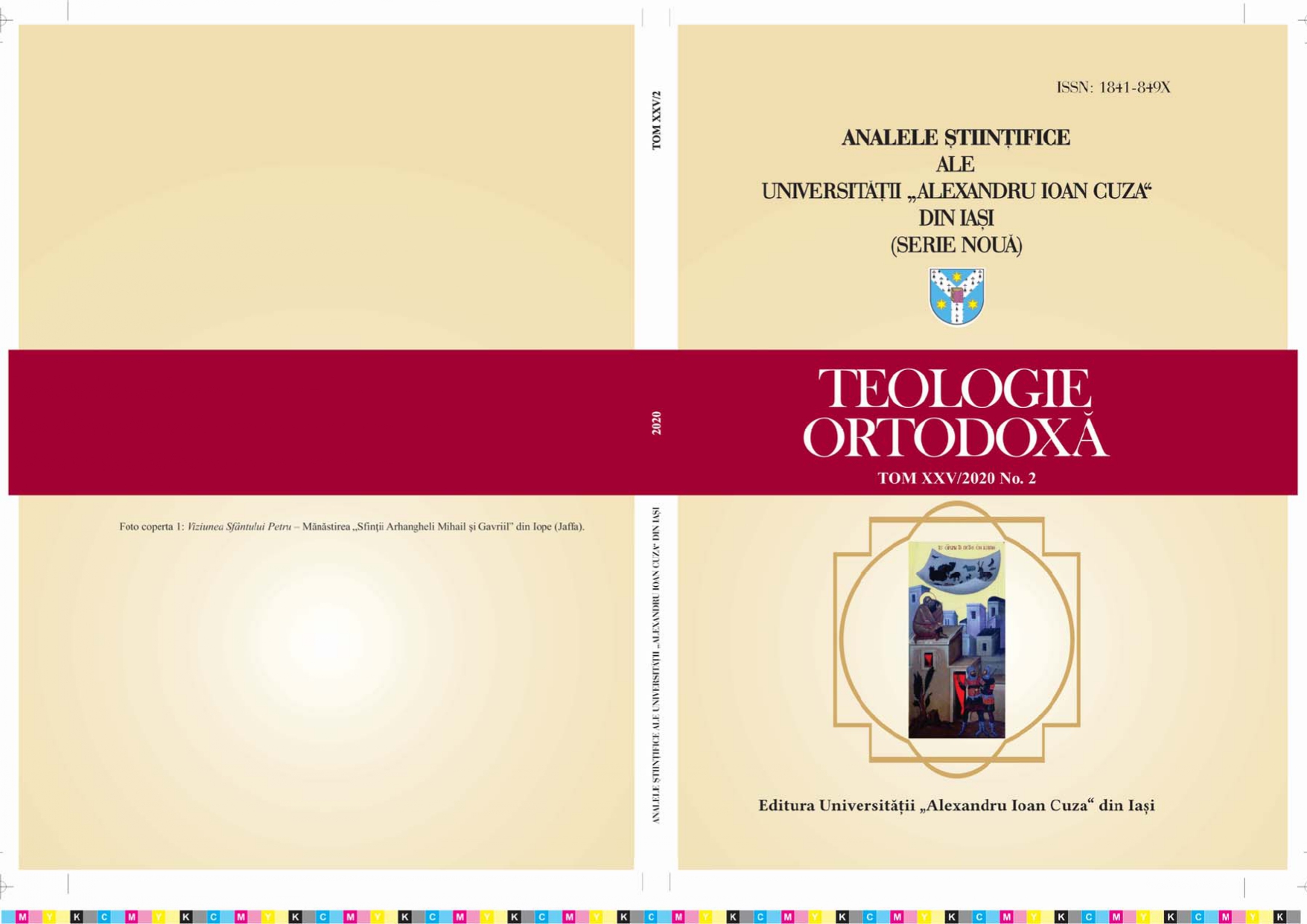Elena ENE D-VASILESCU - Gregory of Nyssa’s Fourth Century Water Organ (a Reconstruction) and the Elements of Creation in His Texts - Water, Air, Fire and Earth
Elena ENE D-VASILESCU
Professor in Byzantine Studies PhD University of Oxford
Abstract:
Gregory of Nyssa (c. 335 - c. 395), as the Platonists and most of the ancient thinkers, consider water, air, fire, and earth to be the fundaments of the created world. He qualifies the human person to be a microcosm, a small world that reproduces the universe. When, in his dialogue On the Soul and the Resurrection,[1] Nyssen describes two of the constituents of creation (air and water) and exemplifies how people use them, he does so by presenting a mechanism powered by those. This article presents a twenty first century reconstruction of that ‘installation’ described by Gregory in the fourth century AD.
Keywords:
Gregory of Nyssa, Macrina, Moses, earth, water, air, and fire
Bibliography:
- Diogenes, Laertius. 2018 “Empedocles”, 8.51-75. In: Lives of the Eminent Philosophers. Edited by Jim Miller. Translated by Pamela Mensch. New York: Oxford University Press
- Empedocles of Akragas. 1992. The Poem of Empedocles: a text and translation with an introduction by Brad Inwood, Toronto, Buffalo: University of Toronto Press. Revised edition 2001, with Greek text, facing English translation and introduction.
- Empedocles of Akragas. 1998. “On Nature”. In: M.R. Wright (ed.), Empedocles the Extant Fragments, with Greek text, English translation, introduction and commentary, New Haven, London: Yale University Press, c 198; London: Bristol Classical Press; Indianapolis; Cambridge: Hackett Pub. Co., (concordance and new bibliography).
- Gregory of Nyssa. 1863. “De anima et Resurrectione inscribitur Macrinia dialogus”. In: J.-P. Migne, Patrologiae cursus completus (series Graeca). Paris: Imprimerie Catholique
- Gregory of Nyssa. 1978. The Life of Moses. Trans. Abraham J. Malhherbe and Everett Ferguson, Mahwah. NJ: Paulist Press. Reprint Harper Collins Publishers in 2006.
- Gregory of Nyssa. 2002. On the Soul and the Resurrection. Trans. and Introduction Catherine P. Roth, Crestwood. N.Y.: St. Vladimir’s Seminary.
- Gregory of Nyssa/Grégoire de Nysse. 1968. “La vie de Moïse”. Edited by Jean Daniélou, Sources Chrétiennes, 1. Paris: Éditions du Cerf. The third edition (revised and corrected)
- Gregory of Nyssa/Gregorii Nysseni. 2019. “De Anima et Resurrectione”. In: Ekkehard Mülenberg and Giulio Maspero (eds.), Gregorii Nysseni Opera Online, general editor Werner Jaeger, consulted online on 22 June 2020 http://dx.doi.org/10.1163/2214-8728_gnoo_aGNO_15_t, Leiden: Brill, c. 2019
- Gregory of Nyssa/Gregorii Nysseni. 2020. “De Vita Moysis pentecosten”. In: Ekkehard Mülenberg and Giulio Maspero (eds.), Gregorii Nysseni Opera Online, vol. 25; general editor for the hardback version Werner Jaeger, consulted online on 22 June 2020. http://dx.doi.org/10.1163/2214-8728_gnoo_aGNO_25_t.
- Plato. 1985. The Collected Dialogues of Plato. Edited by Edith Hamilton and Huntington Cairnes. Trans. Paul Shorey, Bollingen Series 71. Princeton, NJ: University Press.
- Plato. 1997. “Timaeus”. In: Complete Works. Edited by John M. Cooper and D.S. Hutchinson. Indianopolis, Cambridge: Hacket Publishing Company.
- Akerman, S. 1999. “Stiernhielm Pythagorizans and the Unveiling of Isis”. In: Richard Henry Popkin, Everything connects: in conference with Richard H. Popkin; essays in his honor. Edited by James E. Force and David S. Katz, Brill’s studies in intellectual history v. 91, Leiden: Brill.
- Conway-Jones, A. 2014. Gregory of Nyssa’s Tabernacle Imagery in its Jewish and Christian Contexts. Oxford: Oxford University Press
- Ene D-Vasilescu, E., 2019. The epektasis [ἐπέχτασις] and the exploits of the soul in Gregory of Nyssa’s De anima et resurrection. Paper presented at the eighteenth International Conference on Patristics Studies, Oxford, 22 August 2019.
- Ludlow, M. 2003. Universal salvation: eschatology in the thought of Gregory of Nyssa and Karl Rahner. Oxford: Oxford University Press
- Ludlow, M. 2009. “Science and Theology in Gregory of Nyssa’s De anima et Resurrectione: Astronomy and Automata”. In: The Journal of Theological Studies, volume 60, Issue 2, 1 October 2009. https://doi.org/10.1093/jts/flp067
- Martin, A. and Oliver Primavesi. 1998. L’Empédocle de Strasbourg: (P. Strasb. gr. Inv. 1665-1666). Strasbourg: Bibliothèque nationale et universitaire de Strasbourg and Berlin: Walter de Gruyter.
- Mateo-Seco, L.F. and G. Maspero (eds.). 2010. The Brill Dictionary of Gregory of Nyssa. Vigiliae Christianae Supplements 99. Leiden: Brill.
- McGlothlin, T.D. 2018. Resurrection as Salvation: Development and Conflict in PreNicene Paulinism. Cambridge: Cambridge University Press.
- Popkin, R.H. 1999. Everything connects: in conference with Richard H. Popkin; essays in his honor. Edited by James E. Force and David S. Katz, Brill’s studies in intellectual history v. 91. Leiden: Brill.
- Swinburne, R. 2003. The Resurrection of God Incarnate. Oxford: Oxford University Press
- Trépanier, S. 2003. “Empedocles on the ultimate symmetry of the world”. In: David N. Sedley (ed.), Oxford Studies in Ancient Philosophy, volume XXIV, Summer 2003, Studies in ancient philosophy. Oxford: Oxford University Press.
- Trépanier, S. 2004. Empedocles: An Interpretation. New York, London: Routledge
- Wessel, S. 2010. “Memory and Individuality in Gregory of Nyssa’s Dialogus de anima et resurrectione”. In: Journal of Early Christian Studies, vol. 18, number 3.

